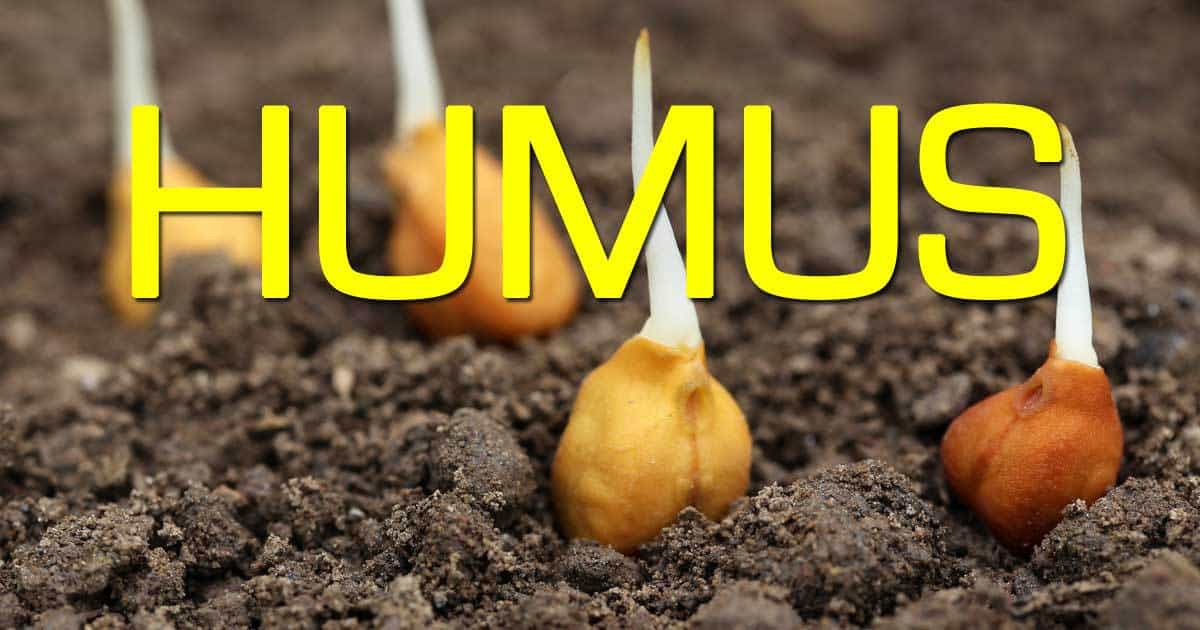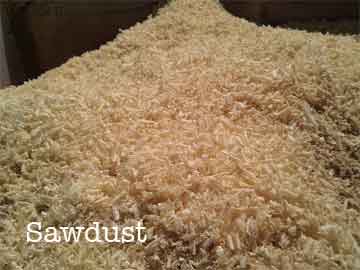Humus is the blood, the life of your garden soil. Every gardener’s primary concern should be to make year-by-year improvements to their soil.
Soil without humus, is inactive, lacking the ability to produce quality plants and flowers. Read on to know more about humus soil and its role in creating a soil structure with rich organic matter content.

What Is Humus Soil?
Need a humus soil definition? Is a humus plant a thing?
Humus is the crumbly, loose material resulting from the decay of organic matter: peat moss, grass clippings, leaf compost, wood chips, decayed sawdust, garden waste, or any other types of organic material.
So, that answers “what is humus soil made of?”.
Aside from adequate drainage, soil fertility is the basic requirement for satisfying plant growth with flowers, fruits, and vegetables. Actually, to most of us “good” soil IS a matter of sufficient humus.
You may also need to consider the soil capacity and type for your plant.
Loamy soils contain abundant soil nutrients making them a good choice for a wide range of plants. Clay soil on the other hand is also a good soil due to its fine clay soil particles and fertility.
Sandy soil makes another soil type. However, it has bigger particles than the first two and it dries out faster. Not enough plant nutrients exist as they get carried away, especially in the event of soil erosion which usually occurs in dry, gritty, and loose soils.
Humus soil contains a major component humic acid that is mainly used to supply vital nutrients to agricultural lands. Time and again when people ask me to look at their gardens, often the answer to their problems has been simply the need for more humus.
Why Is Humus Important?
Humus in soil plays an important role by retaining moisture, loosening heavy, sticky soils, adding body to light soils, helping improve drainage and soil aeration and encouraging the increase and growth of soil organisms and helping make nutrient components available to plants.
In the past, adding barnyard manures assured humus was always being added to soils. In most places, they are no longer readily available. Now gardeners must turn to other materials, such as dried manures, green manures, leafmold, sedge peats, peat moss, and their own garden wastes.

Of all the garden wastes we find today many gardeners still fail to utilize compost. Almost all gardens have room for some type of compost bin tucked away behind shrubbery or the garage.
Here organic matter and plant material such as grass clippings, weeds, leaves, old flowers, vegetable waste from the kitchen, and plants can be layered in 4″ to 6″ inch layers. Keep layers flat, and on top of each layer spread garden soil. As little as 1/2-inch will inoculate the pile with the necessary decay bacteria.
If you wish to hasten the decomposition, a generous dusting of any commercial fertilizer high in nitrogen can be added to enrich the resulting compost.
The pile may reach a height of 4′ or even 5′ feet high, however, at all times its top must be kept flat or slightly indented to catch and retain rain.
If the season is dry, an occasional watering will speed decay. One important point is not to add thick layers of maple leaves or grass clippings unless some coarser material is mixed with them, because they compact, and decay is inhibited.
FYI – Normally a compost pile will heat up to about 170° degrees Fahrenheit, killing most of the weed seeds. When the compost pile is several months old, you can speed up decay and create a more homogenous mixture by slicing into it and repiling it.
When compost is crumbly and loose, the materials that make up the compost are no longer identifiable and the compost stands ready for soil work. Composting time varies with materials used, size, weather, and other additional factors.
Slice down through the pile when loading it into your wheelbarrow to mix it further. Spread compost 1″ – 2″ inches thick over your garden soil and incorporate the compost thoroughly. You will be surprised at how your plants will respond and grow.
Humus Defined
We should define terms before we discuss the practical and essential points of how to add humus to our soils efficiently and at a reasonable expense.
Many of us use the words “organic” and “humus” as synonyms. Organic material is the raw stuff from which humus is derived.
For example, if you dig two inches of sawdust into the topsoil, that is organic material. When it has decayed and has been broken down by the action of bacteria and beneficial molds, it is humus.
Makeup of Humus
I am not a trained scientist so as far as technical data is concerned, I use facts and figures furnished by scientists.
So when they say that of the elements in humus, carbon and nitrogen are two of the most important, I accept that finding.
In humus, for example, carbon frequently outweighs nitrogen by 10 to one. I read somewhere that in crop residues, the carbon may outweigh the nitrogen by several times the 10 to one ratio.
In terms of humus, what does this mean?
It means that extra nitrogen is needed, and this point is perhaps the most important one for home gardeners. For the organic materials that we add, and which change to humus, take nitrogen first – Plant roots come second.
The restoration of soil organic matter is a problem of increasing the nitrogen level or of using nitrogen as a means of holding the carbon and other materials.
Adding Organic Material
With most of us, the practical problem of increasing humus is a matter of adding organic material to the soil each year. I think natural animal manures are the best, becoming increasingly difficult to secure, are expensive, and are in short supply.
Let this material stand in a pile outdoors for a full year, and then add a 2″ to 5″ inches layer to your garden, and spade or hoe it into the top two or three inches of soil.
All good gardeners have a compost heap or else they spread materials directly on the soil for a mulch, or incorporate them into the soil. Most of us, however, do not have sufficient composting material to add the amount of organic matter we want.
Sources of Inexpensive Material?
For many the first choice is sawdust. In the northeast, there are innumerable piles of sawdust and in most cases, you can get all you want for the labor involved.
One of the pleasant features of working with sawdust is that it improves all types of soils: clay, sandy, or average loam soils.

Year after year, try adding sawdust to various plots, in 2″, 3″, and 4″ inch depths and spread or hoe it into the topsoil. For every two inches of sawdust incorporated into the soil. Add a high nitrogen fertilizer to speed up the breakdown of the sawdust.
Another good way to add humus each year is an inch or two layers of peat moss plus an inch of dried cow manure.
Peatmoss is pure humus, to begin with, and that gives quicker results than when one uses sawdust. If you can secure leaf mold for the labor of getting it from a woodland, it is excellent, and usually, it is not so acid as we have been led to believe.
Enough Humus?
Are you wondering how to make humus soil or if you’re using enough?
How does one tell if they have sufficient humus soil material to produce the best flowers and crops? To get exact data, it will be necessary to have the soil analyzed, but with most of us, we will know if we can judge accurately when soil is “spongy” with good pore space and soil structure.
The word “spongy” and the word “crumbly” fit my idea of soil with plenty of humus. Take a handful of this type of soil and it feels friendly; squeeze it, and when you jab a finger into it, the ball crumbles, yet it has good water-holding capacity. Heavy soil without sufficient humus feels unfriendly and solid; soil that is too sandy falls apart.
Keep this paragraph in mind and you will be a better gardener.
“The function of humus is to release chemicals already in the soil from the locked-up forms (fixed or in a state of fixation) in which they may exist into other forms which the feeding roots of the plant can absorb.”
“The foundation of successful gardening is very simple. It is a matter of sufficient humus so that the rootlets can get the nutrients needed for growth and production. A program of increasing the humus content of the soil is part of the planning of every good gardener.”
Images: Chris Waits | SMcGarnigle